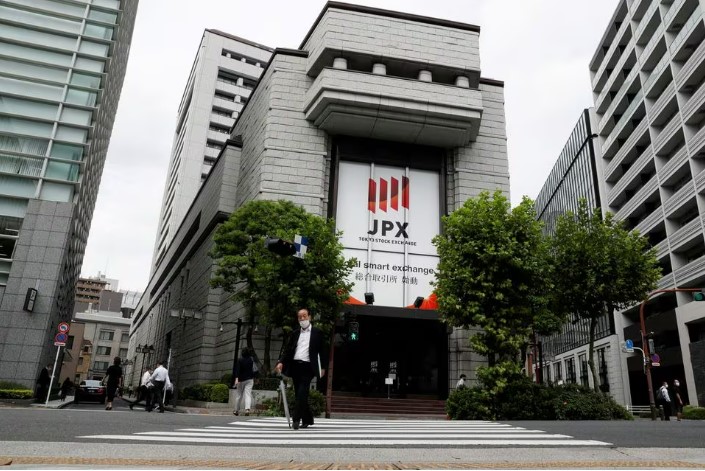
In a surprising turn of events, the Japanese yen experienced a significant surge on Thursday, leaving financial markets buzzing with speculation. This surge came in response to hints from monetary policymakers, suggesting that the Bank of Japan (BOJ) might be considering a departure from its ultra-low interest rate plan. Simultaneously, global stocks saw a rebound after three consecutive declines, with investors closely scrutinizing the latest U.S. labor market data.
The Yen’s Surge and BOJ’s Policy Indications
1. Noteworthy Jump:
The yen witnessed a remarkable 2.27% surge against the greenback, marking its most substantial one-day jump since January 12.
2. BOJ Governor’s Statements:
Bank of Japan Governor Kazuo Ueda added fuel to the speculation, hinting at a potential shift in the central bank’s policies. He mentioned that policy management would “become even more challenging from the year-end and heading into next year,” raising eyebrows in financial circles.
3. Market Reactions:
The dollar index fell 0.39%, and the euro gained 0.16% against the dollar, indicating the immediate impact of these developments on global currency markets.
Global Financial Landscape
4. Investor Caution:
Experts weigh in on the necessity of such a shift, emphasizing the caution required due to potential impacts on Japanese companies and banks.
5. Slow and Cautious Approach:
Thomas Martin, a senior portfolio manager at GLOBALT Investments, suggests a gradual approach. He notes, “They’re going to be super slow, but they’ve got to get there.”
6. Market Expectations:
Market analysts now estimate a 21% chance of the BOJ hiking rates at its final meeting of the year on December 19, according to LSEG data.
7. Japanese Government Bonds:
Japanese government bonds experienced a sharp selloff, with yields on the 10-year bond rising significantly, the most since July 28.
U.S. Stock Market Dynamics
8. Positive Momentum:
On Wall Street, U.S. stocks climbed, with communication services stocks leading the way. Google parent Alphabet’s rally contributed to a 3% gain in this sector.
9. Labor Market Data Influence:
The positive momentum follows the release of data on the labor market, showing an uptick in weekly jobless claims.
10. Awaited Payrolls Report:
As attention turns to Friday’s government payrolls report, the market anticipates further insights into the U.S. labor market’s health.
11. Market Indices Performance:
The Dow Jones Industrial Average rose slightly, the S&P 500 posted gains, and the Nasdaq Composite showed a notable increase.
Global Economic Landscape
12. European Shares:
European shares, however, faced a downturn after a recent rally, with the STOXX 600 index down 0.29%.
13. MSCI’s Global Stocks Gauge:
MSCI’s gauge of stocks across the globe saw a 0.26% gain, breaking a streak of three declines.
14. U.S. Treasury Yields:
Longer-dated U.S. Treasury yields edged up, rebounding from three-month lows ahead of the U.S. jobs report.
15. Expectations from the Federal Reserve:
Expectations of a U.S. rate cut by the Federal Reserve in March have risen to about 63%, reflecting changing sentiments amid economic data softening and statements from Fed officials.
Conclusion
In conclusion, the unexpected surge in the Japanese yen and the potential shift in the Bank of Japan’s policies have created ripples in global financial markets. As investors navigate uncertainties, the dynamics of the U.S. stock market and global economic indicators come into sharp focus. The intricate balance between monetary policies, market reactions, and economic data will undoubtedly shape the financial landscape in the coming months.
FAQs
1. Why did the yen experience a significant surge?
The yen surged due to hints from the Bank of Japan about a potential shift in its ultra-low interest rate plan.
2. How are global stocks reacting to these developments?
Global stocks bounced back after three declines, with varying performances in different regions.
3. What is the market’s outlook on the Bank of Japan’s rate hike?
Market analysts estimate a modest 21% chance of the BOJ hiking rates at its final meeting of the year.
4. How did U.S. stocks perform in the wake of these events?
U.S. stocks climbed, driven by positive momentum in communication services and encouraging labor market data.
5. What factors are contributing to expectations of a U.S. rate cut by the Federal Reserve?
Softening economic data and statements from Federal Reserve officials, including Chair Jerome Powell, have increased expectations of a rate cut by March.
